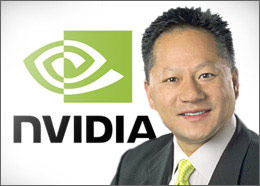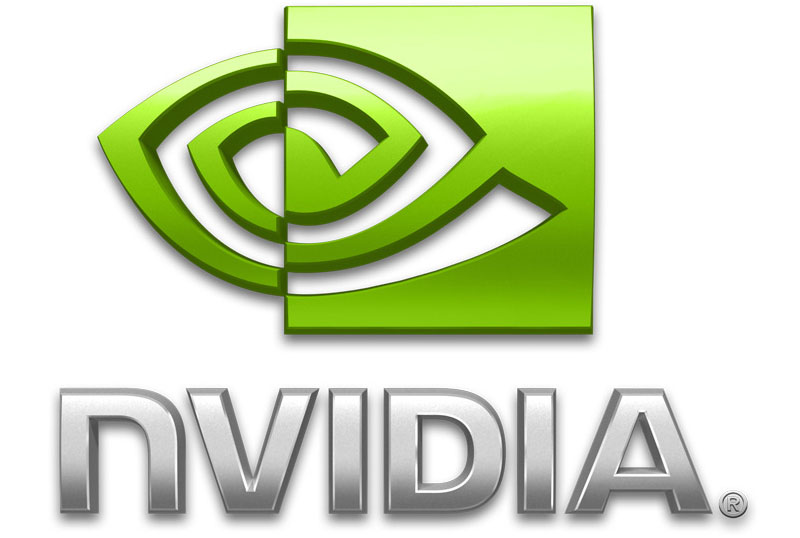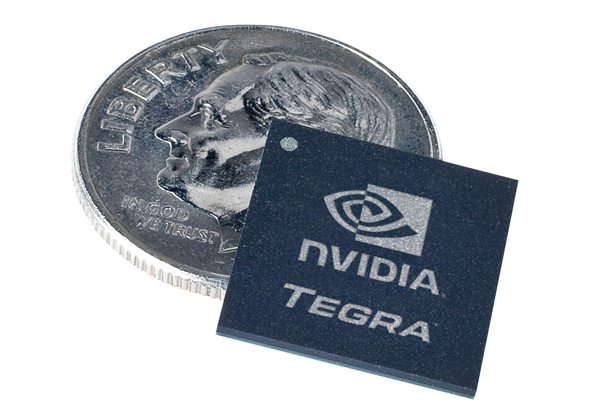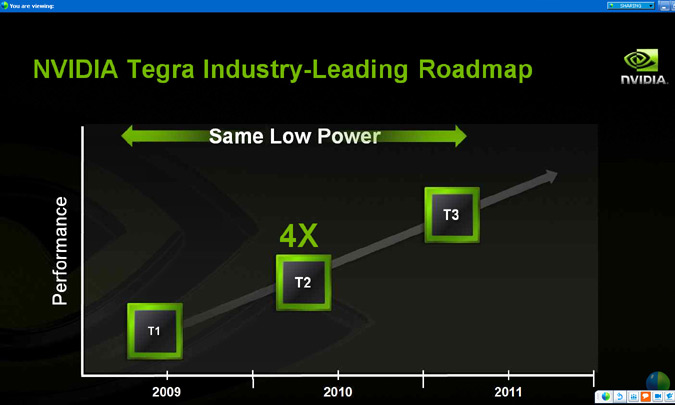Displaying items by tag: Tegra
Qualcomm Claims their Next Gen Processor will be 50% Faster than the Other Guys
 With all the news about the major ARM players like Samsung, nVidia, Texas Instruments etc. It is nice to finally hear the news about one of the largest, yet least talked about. At one time if you bought a cell phone (this was before the Smart Phone age) you had Qualcomm under the hood (and in many cases AMD as well). However, lately all we hear about is Hummingbird and Tegra (with an occasional mention of Snapdragon). That is until yesterday.
With all the news about the major ARM players like Samsung, nVidia, Texas Instruments etc. It is nice to finally hear the news about one of the largest, yet least talked about. At one time if you bought a cell phone (this was before the Smart Phone age) you had Qualcomm under the hood (and in many cases AMD as well). However, lately all we hear about is Hummingbird and Tegra (with an occasional mention of Snapdragon). That is until yesterday.
Qualcomm has announced that they are prepping to launch a new series of 28nm processors which they claim are 50% faster than “other ARM based offerings in the mobile CPU market”. This is very healthy boast to say the least. Right now all of this is in the pre-production stages so we do not have any phones or designs to tell you about, but we do have a little bit of information about the processor itself.
The new proc will be dubbed the S4 MSM 8960 and will hit the market as a dual core offering with a quad core to follow. Instead of an on/off switch for power the CPU is going to be built with something like a dial. This will allow for dynamic power steps to be sent to the processor. I have not heard of this being done quite this way so it should be interesting to see how it works out.
Inside the 8960 you will have a new GPU, this is the Adreno 225 which is a unified shader design (think AMD/ATi) and will support DX9.x and possibly shader model 3. Now we wonder what kind of radio they are going to build into this as that has been one of Qualcomm’s strengths (the Cellular and Wireless Radio built into the SoC) and something that Samsung and nVidia have been trying to get done as well. We know that nVidia has been buying up wireless technology patents with the hopes integrating their own radios into their Tegra SoC, but have not announced anything on that just yet.
For now it would seem that Qualcomm has taken a step out front in the performance arena. We do think that their GPU offering is probably not up to the same standard as nVidia’s Tegra, but then again many people looking to buy a phone do not need it to play graphics heavy games… I mean really, how much GPU does Angry Birds or words with friends use?
Discuss in our Forums
ARM Announces 64-Bit Specifications for ARM Processors
 We have been following the path of Windows 8 pretty closely including trying out the Developer’s preview on some existing tablet hardware (which lasted all of 4 days). So far we have a good feel for the OS and what is nice and what is not. We have talked at length about the mistake that we feel the MetroUI is both for the tablet market and the desktop. But it is the tablet market that we are most interested in. We know that there will be more x86 (64) based tablets in the future especially with the popularity (relatively) of the ones that are currently out (and that use a full Intel Core CPU and not an Atom). But how will ARM fare even a quad core ARM SoC when Windows 8 and all of its anticipated bloat hits it?
We have been following the path of Windows 8 pretty closely including trying out the Developer’s preview on some existing tablet hardware (which lasted all of 4 days). So far we have a good feel for the OS and what is nice and what is not. We have talked at length about the mistake that we feel the MetroUI is both for the tablet market and the desktop. But it is the tablet market that we are most interested in. We know that there will be more x86 (64) based tablets in the future especially with the popularity (relatively) of the ones that are currently out (and that use a full Intel Core CPU and not an Atom). But how will ARM fare even a quad core ARM SoC when Windows 8 and all of its anticipated bloat hits it?
This is that thing that has us wondering. Well we think we have an answer as ARM has just announced 64-bit capable processors. The ARMv8 is a going to be a new specification for ARM processors that is capable of executing both 32 and 64-bit instructions. This means an extended memory profile (not to mention performance) for applications that can handle the 64-bit memory block addressing. But more than that these smaller and lighter CPUs will be heading to the enterprise for some specific tasks (which means the rumors about a future ARM based version of Windows Server are true). Imagine being able to utilize these low power lost cost CPUs to run Domain Controllers, Web Server and other system that do not require the heavy lifting of a full x86-64 CPU. It will save companies quite a bit of money, and what is more… what starts in the enterprise ends up on the consumer’s plate. We have a sneaking suspicion that these new CPUs will end up in the consumer market faster than usual though as the press release about this mentioned Microsoft and nVidia directly. nVidia has made no secret that they want their Tegra SoCs to represent 50% of their revenue which means the consumer market for sure (with some enterprise products just for fun).
As of right now, the first devices will not be announced until 2012 with the first prototypes hitting in 2014. This means that while we have a good wait ahead of us it will give Microsoft time to fix what is buggy in Windows 8 just in time for the new 64-bit ARM CPUs to launch.
Discuss in our Forum
Windowd 8 Detailed at Microsoft's Build Conference
 Yesterday all of the news was about Microsoft’s Build Developer conference out in California (Anaheim to be exact). Now this conference is (as you could guess) all about developing applications and software for Windows operating systems and also about Windows in general. So it should come as no surprise that one of the highlights was the talk about Windows 8. Attendees at the conference were treated to a preview of Microsoft’s next OS even though the Developer’s blog on Windows 8 has been very handy in keeping the press and the rest of the world up to speed on things. We have reported on one or two new features highlighted on that site and are looking forward to hearing about more of them in the near future.
Yesterday all of the news was about Microsoft’s Build Developer conference out in California (Anaheim to be exact). Now this conference is (as you could guess) all about developing applications and software for Windows operating systems and also about Windows in general. So it should come as no surprise that one of the highlights was the talk about Windows 8. Attendees at the conference were treated to a preview of Microsoft’s next OS even though the Developer’s blog on Windows 8 has been very handy in keeping the press and the rest of the world up to speed on things. We have reported on one or two new features highlighted on that site and are looking forward to hearing about more of them in the near future.
However, all that aside, back to the Build conference. The attendees were not only treated to a more in-depth preview of Windows 8 they also heard from some of the manufacturers that are going to support Win8. One of these was nVidia as they talked up their new developer program for Windows 8 on x86 and Tegra. nVidia has been talking about Windows 8 for some time (as have we) and they are looking forward to it launch so that they can begin rolling out the Windows 8 based tablets for their Tegra SoCs.
Windows 8, unlike previous versions of Windows, will be something of a game changer. Microsoft has worked pretty hard to make this OS more hardware friendly including showing that you can run this on an older Atom CPU with as little as 1GB of RAM. Other nice options (very tablet friendly options) are things like full NFC (Near Field Communication) support. This allows you to interact with items like Bluetooth headsets with a single tap, tap-to-share file access, and other items once reserved for smartphones. We have to wonder if Google and Apple are getting a little concerned about the Windows 8 right about now.
For those of you looking to try things out, there is a developer preview available for download.
Discuss in our Forum
nVidia looking for the mobile market to grow
 About two years ago, roughly the same time as the ZuneHD hit the market with the first Tegra inside, nVidia CEO Jen-Hsun Huang made a prediction of sorts. He stated that he envisioned a time when the GPU was not the bread and butter of nVidia. Instead he saw the mobile CPU and the SoC (system on chip) as the wave of the future. Of course he could not get away from his graphical legacy, so his vision also included an nVidia GPU (or two) along with the mobile CPU. At the time the press sort of overlooked the story. It was not that news worthy. After all the Tegra only had one well known design win (there were others but many never reached the market) the ZuneHD. Arguably it was (and still is) a great product, it just was marketed VERY poorly and was going head to head with the greatest show on Earth; the Apple marketing team.
About two years ago, roughly the same time as the ZuneHD hit the market with the first Tegra inside, nVidia CEO Jen-Hsun Huang made a prediction of sorts. He stated that he envisioned a time when the GPU was not the bread and butter of nVidia. Instead he saw the mobile CPU and the SoC (system on chip) as the wave of the future. Of course he could not get away from his graphical legacy, so his vision also included an nVidia GPU (or two) along with the mobile CPU. At the time the press sort of overlooked the story. It was not that news worthy. After all the Tegra only had one well known design win (there were others but many never reached the market) the ZuneHD. Arguably it was (and still is) a great product, it just was marketed VERY poorly and was going head to head with the greatest show on Earth; the Apple marketing team.
Jump forward to today and we find the Tegra and the Tegra 2 in many devices. In fact one of the best-selling Android tablets on the market today has a Tegra 2 dual core SoC inside (for those of you that do not know it is the Galaxy Tab 10.1) this is followed by devices like the Asus EEE Pad Tansformer and others. They really have come a very long way in terms of the smartphone and tablet market. Of course they still have Apple to contend with (and their legal and marketing teams) so the battle is not won just yet. However, what we are seeing is that Huang’s vision is coming to pass. nVidia just might find itself earning more than 50% of their income from the tiny SoC and not their high-end GPUs.
Still the road ahead is not completely clear, nVidia will face competition in the form of Qualcom (which just bought BigFoot Networks), as well as Samsung and Even Apple (to a lesser degree) in this new market. As for Intel, Huang says they are not worried about them because the Atom is not an ARM CPU and is not even “speaking the same language”. He feels that the lower cost ARM based tablets will be more attractive to the consumer looking for a small and light system. With the advent of Windows 8 for ARM people will also gain the ability to move back and forth between ARM and x86 keeping things on almost the same platform. This will help to bring the more “desktop centric” consumers into the fold especially with the prospect of a quad core ARM CPU running Windows 8 on the horizon.
It is when companies have to innovate to survive that some of the coolest things arise. I wonder what we will see from Tegra in near future and what lessons from Tegra will nVidia take to other departments to help improve them?
Source CNET
Discuss in our Forum
Has nVidia already moved to 28nm?
 According to a few articles on the internet and a few things that are rumbling along the “usual lines” nVidia could already have working 28nm Silicon. Although no one seems to know what this silicon is a good guess would be Tegra. Jen-Hsun Huang, nVidia’s CEO, has been quotes are saying they have an entire team working to make this move much smoother than the one to 40nm.
According to a few articles on the internet and a few things that are rumbling along the “usual lines” nVidia could already have working 28nm Silicon. Although no one seems to know what this silicon is a good guess would be Tegra. Jen-Hsun Huang, nVidia’s CEO, has been quotes are saying they have an entire team working to make this move much smoother than the one to 40nm.
If you were not around for that one let’s just say it was a mess and nVidia lost a lot of money due to bad yields and other issues that were spawned by TSMC (Taiwanese Silicon Manufacturing Company) and their own rough transition to this die size. However, if you remember during this troubling time for both nVidia and TSMC there was an announcement that TSMC had already begun work moving to 28nm.
This announcement was made by TSMC around September/October which would make the timing for this about right. So, if TSMC has gotten their 28nm process right and nVidia is truly moving Tegra to 28nm first (and has working silicon) then the logical guess for this working Silicon is Tegra. The question now is which Tegra? It is highly unlikely to be Kal-El, but considering the claims that Jen-Hsun is making, a quad core ARM based SoC (System on Chip) that uses less power than the current dual core, we have to wonder. This is speculation of course but we do have some evidence for this supposition. It would also seem to fit the delays of this new mobile chip that we have heard about (now they are saying Holiday Season). It would not be beyond the realm of probability to see these SoCs ready for December and products out in January/February time frame which again could mean the Kal-El will show up as 28nm and not 40nm… But to be honest it is VERY unlikely.
Discuss in our Forum
nVidia talks up power efficiency on their Quad Core Kal-El Tegra processor
 About three or four years ago nVidia CEO Jen-Hsun Huang made the bold announcement that he wanted nVidia’s ARM based SoC (System on Chip) named Tegra to become 50% of nVidia’s revenue. One of the products that has had at least good success has been Microsoft’s ZuneHD. We were given the chance to play around with one of these and found it to be a great product. Unfortunately between the launch of the Tegra and the Tegra 2 was a serious delay. This had something of a negative impact on the market acceptance for this processor. When you combined these delays with the issues (and rumors) around the Fermi GPUs things did not look good for nVidia’s dream.
About three or four years ago nVidia CEO Jen-Hsun Huang made the bold announcement that he wanted nVidia’s ARM based SoC (System on Chip) named Tegra to become 50% of nVidia’s revenue. One of the products that has had at least good success has been Microsoft’s ZuneHD. We were given the chance to play around with one of these and found it to be a great product. Unfortunately between the launch of the Tegra and the Tegra 2 was a serious delay. This had something of a negative impact on the market acceptance for this processor. When you combined these delays with the issues (and rumors) around the Fermi GPUs things did not look good for nVidia’s dream.
However, since that time they have managed to turn much of that around and pulled off some great design wins. We have found nVidia’s dual core Tegra 2 in devices such as Asus’ Transformer and the Samsung Galaxy Tab 10.1. Both of these devices have grabbed the market’s interest and have begun to nibble away at the strangle hold that Apple has on the tablet market (and prompted a number of lawsuits from Apple).
Now with the Tegra 2 still tumbling out into the market nVidia is talking Kal-El a quad core Tegra that is reportedly faster and more power efficient than the Tegra 2. Now, having a power efficient quad core ARM based SoC is a very cool feat, but if nVidia is to be believed then the Kal-El Tegra will use less power than the current dual core Tegra 2. For those that will sat that the Android based Tablet and phone is in serious trouble due to Apple’s recent lawsuits and patent complaints do not worry. According to Huang, nVidia is still investing heavily in Android and also looking forward to Microsoft’s Windows 8. Windows 8 will be the first Windows operating system for ARM based SoCs.
We have some questions into nVidia to see just what they see as the future for Terga and the whole world of the Tegra and Smart device. We hope to hear back from them soon on this, but for now… it will be interesting to watch and see if nVidia can get Kal-El out of the gate soon and not repeat the same mistakes that plagued Tegra 2.
Discuss this in our Forum
Is Tegra 2 Too late?
Last year just before the launch of the Tega SoC inside the Zune HD player from MS, we all were treated to something unusual. The Green PR Machine from nVidia decided to show us a roadmap for future products. This roadmap laid out the path for Tegra and its future incarnations. According to the map we should have seen the tiny new system at CES 2010 and we did see some systems that were centered on Tegra 2. These were very early samples of the products (in most cases even the software was very shaky), but they were still there.

